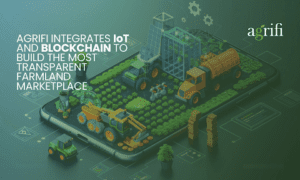Welcome to the world of tomorrow, where everyday objects are becoming intelligent and interconnected! You may have heard the buzzword ‘Internet of Things’ thrown around, but do you really know what it means? Don’t worry; we’ve got you covered. In this blog post, we will dive deep into the concept of the Internet of Things (IoT) and unravel its mysteries. Get ready to explore how your smart fridge talks to your fitness tracker and why your car can predict traffic patterns.
Introduction to the Internet of Things (IoT)
The Internet of Things, often shortened to IoT, is a term used to describe the network of physical objects—devices, vehicles, buildings, and other items—that are embedded with electronics, software, sensors, and connectivity, enabling them to collect and exchange data.
The IoT is a giant network of connected things and people, all of which collect and share data about their activities. The goal of the IoT is to make our lives easier and more efficient by allowing us to better monitor and control the physical world around us.
IoT devices can range from simple sensors to complex machines like self-driving cars. They can be found in our homes, our workplaces, our hospitals, and even in our pockets. In fact, there are already billions of IoT devices in use around the world today.
The benefits of the IoT are many and varied. By connecting devices and gathering data, we can gain valuable insights into how they are being used and how we can improve them. We can also automate tasks that would otherwise be manual or time-consuming, such as turning lights off when we leave a room or monitoring our energy usage.
History of IoT
The term ‘Internet of Things’ was first coined by British technologist Kevin Ashton in 1999. Since then, it has become a widely used term to describe the growing trend of connecting physical objects and devices to the internet.
IoT is made up of three key components: sensors, connectivity, and data analytics. Sensors are embedded into physical objects and devices to collect data about their surroundings or user behavior. Connectivity refers to the network that allows these devices to connect and communicate with each other and with external systems. Data analytics is used to process and interpret the data collected by sensors, which can then be used to generate insights and take action.
There are many different applications for IoT, from monitoring environmental conditions and managing traffic flows to improving healthcare outcomes and enhancing customer experiences. By 2025, it is estimated that there will be 75 billion connected devices worldwide, more than double the number in 2015, generating a staggering 79 zettabytes (ZB) of data per year.
Benefits of IoT
The internet of things, or IoT, is a system of interconnected devices and sensors that can collect and share data. The benefits of IoT are vast and include improved efficiency, better decision-making, and increased safety.
IoT can help businesses improve their efficiency by reducing downtime and improving the accuracy of data collection. For example, if a machine breaks down, the IoT system can quickly alert the maintenance team so that they can fix the problem before it causes production to grind to a halt. Additionally, because IoT devices can collect large amounts of data very quickly, businesses can use this data to make better-informed decisions about their operations.
Safety is another key benefit of the IoT. By connecting devices and sensors to a central system, businesses can monitor potential hazards in real-time and take action to prevent accidents before they happen. For example, if a sensor detects a gas leak in a factory, the alarm can be triggered immediately so that everyone can evacuate the area safely.
The benefits of IoT are many and varied. From improved efficiency to increased safety, businesses of all types can benefit from implementing an IoT system.
Examples of IoT
There are a number of different ways that the Internet of Things can manifest itself. Here are some examples:
1. Smart Homes: Devices in the home that are connected to the internet and can be controlled remotely. This can include things like thermostats, security cameras, lights, and appliances.
2. Connected Cars: Vehicles that have sensors and devices that connect them to the internet. This allows for things like remote diagnostics, infotainment systems, and automated driving features.
3. Wearables: Smart devices that are worn on the body, such as fitness trackers, smartwatches, and augmented reality glasses.
4. Industrial IoT: The use of sensors and connected devices in industrial settings to improve efficiency and safety This can include things like predictive maintenance and inventory management.
Challenges Faced with IoT
The Internet of Things (IoT) is a network of physical objects that are connected to the internet. These objects can collect and exchange data. The IoT is a transformational force that is changing how we live, work, and play.
However, the IoT is not without its challenges. One of the biggest challenges is security. Because the IoT connects devices to the internet, it creates new opportunities for hackers to gain access to sensitive data. Another challenge is privacy. As more and more data is collected about our daily lives, there are concerns about who has access to this information and how it will be used.
Another challenge facing the IoT is interoperability. This refers to the ability of devices from different manufacturers to work together. For example, if you have a smart home system from one company and a smart thermostat from another company, they need to be able to communicate with each other in order for you to control your home temperature from your thermostat. Interoperability is essential for the success of the IoT, but it can be difficult to achieve due to the different standards used by different manufacturers.
scalability challenge. The current infrastructure of the internet was not designed for the massive amount of data generated by billions of connected devices. This means that there are potential bottlenecks in the system that could impede its growth.
One of the biggest challenges facing the IoT is managing all of the data that is being generated by these connected devices.
Security Considerations for the IoT
As the Internet of Things (IoT) continues to grow, it’s important to be aware of the potential security risks associated with connecting devices to the internet. Here are some things to consider when securing your IoT devices:
1. Use strong passwords and encrypt your data.
2. Keep your software and firmware up-to-date.
3. Be aware of how you’re connecting your devices to the internet.
4. Limit access to your devices and data.
5. Use security tools like firewalls and antivirus software.
Conclusion
The Internet of Things is a rapidly growing concept that has the potential to completely revolutionize how we interact with our devices and access information. We have seen some amazing examples of IoT applications in recent years, from self-driving cars to smart homes and beyond. With such an incredibly wide array of possibilities, it’s easy to see why the IoT continues to capture people’s imaginations and draw interest from tech enthusiasts all over the world. Understanding what IoT really means is essential for anyone who wants to stay on the cutting edge of technology and reap its many benefits.



































